4 Week Old Baby Chick With Crooked Toe
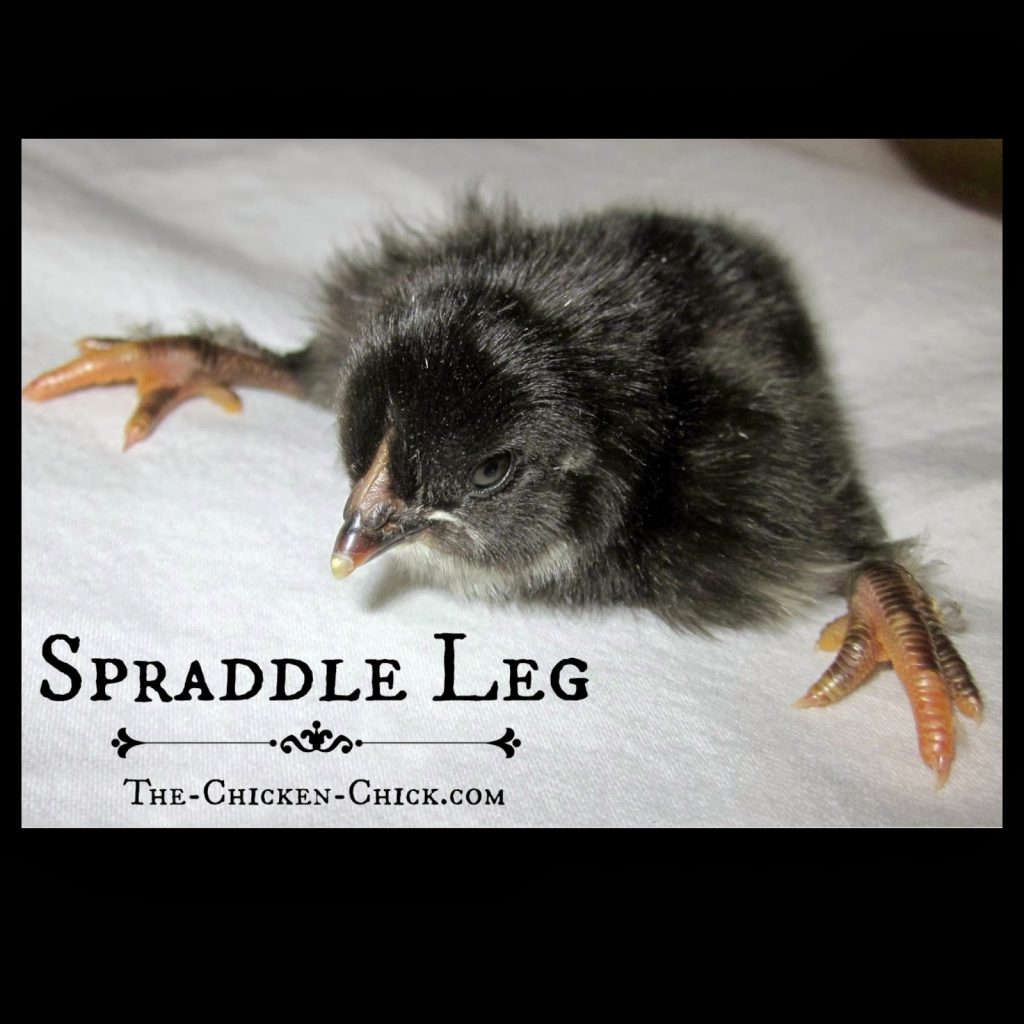
Spraddle leg, also known as 'splay leg,' is a deformity of a craven's legs, characterized by feet pointing to the side, instead of frontwards, making walking difficult, if not impossible. Spraddle leg tin can be permanent if left uncorrected, but it'due south simple to correct, so let'southward expect at how to fix information technology.

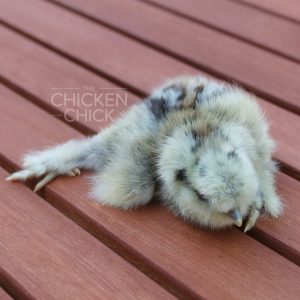
CAUSES
Ane cause of spraddle leg is slick floors that result in chicks losing their ground. The legs twist out from the hip and remain in that position unless corrected.
Other causes are:
- temperature fluxuations during incubation
- a difficult hatch that makes legs weak
- leg or foot injury
- brooder overcrowding
- a vitamin deficiency
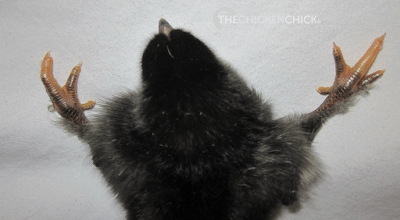
PREVENTION
Providing traction for tiny feet is the all-time way to avert spraddle leg (in cases where it can be avoided). Chicks should not walk directly on dry paper. Safer options are paper towels or rubber shelf linercovering newspaper.
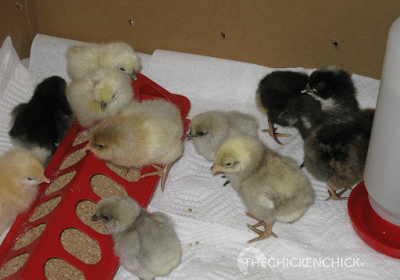
Valentina (who hatched the twenty-four hour period after Valentine'south Day) had been abandoned while under the care of a hen. The egg was not warm when I institute it. Hoping for the best, I put it in my incubator correct away, knowing information technology was close to hatch twenty-four hour period. The chick had a difficult fourth dimension freeing itself from the shell and required assistance hatching. The leg deformity was immediately obvious. Inconsistent temperatures during incubation combined with the difficulties hatching were clearly the cause of her spraddle legs. She couldn't move from this position.
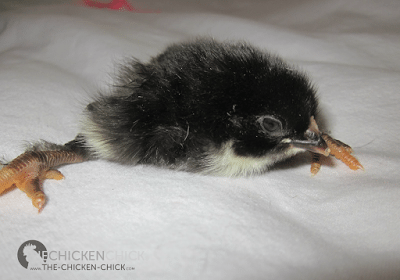
Treatment
The younger a chick is when treated, the meliorate take a chance of preserving normal leg function. Untreated, a chick can dice from inability to reach food and water without assist. A chick can learn to push upwards, stand and walk correctly inside less than a calendar week, often much sooner if treated.
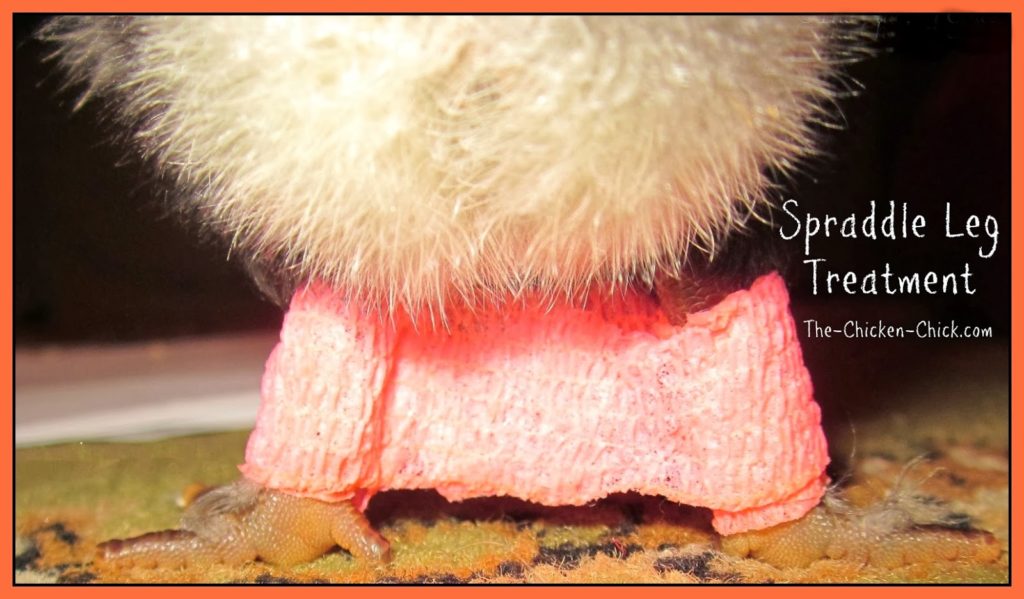
The legs must be restricted, braced or 'hobbled,' to provide stability and allow the chick's basic and muscles to grow and strengthen in the correct position.
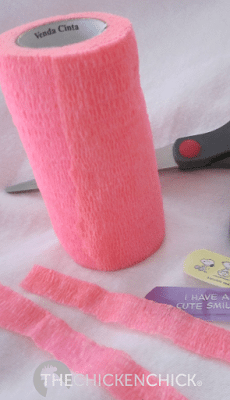
Any number of materials tin can be used for a brace, from bandaids to rubber bands, yarn to tape. My preference isVetRap. It'due south easy to use, sticks to itself, stays deeply in identify, doesn't restrict circulation when properly applied, won't harm the skin or leg feathers, is easy to remove and has just enough stretch to allow the chick to practise walking.
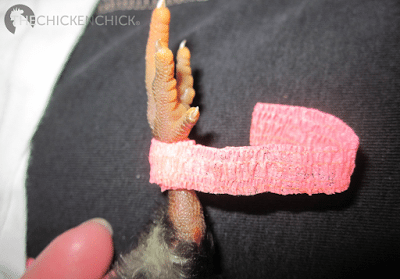
I wrap 2 little pieces of VetRap effectually each leg merely below the knee joint articulation, being careful non to wrap too tightly. Since it sticks to itself, no record is required. I find that these anchors brand information technology easier to change the caryatid.
Adjacent, I cutting a long piece (approx 6-7″) to bind the legs together. The legs should exist positioned underneath the chick, slightly wider than a normal opinion and should allow a slight amount of play in betwixt the legs for the chick to motion a little fleck. The caryatid should be removed in one case daily to assess the progress and re-adjust every bit needed. It'south important to ensure that the portion touching the legs does not restrict claret-flow. If there are indentations on the chick'southward legs, the brace is too tight. Every bit the chick's legs strengthen, gradually allow for more slack between the legs until it is articulate that support is no longer needed.

This wrap task is not ideal, but the photo was too funny not to share."Police! Show me your hands!"
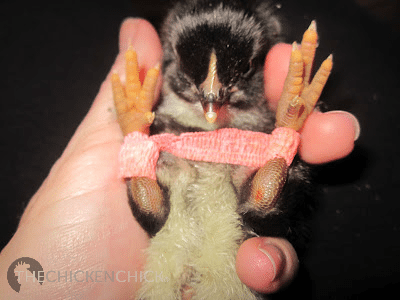
Chicks being rehabilitated must be supervised near water as they tin drown. They will require aid drinking at first. I put stones in the h2o as a safety measure. (The funnel but dissuades chicks from continuing in the dish, until they learn to knock it over, of course.)
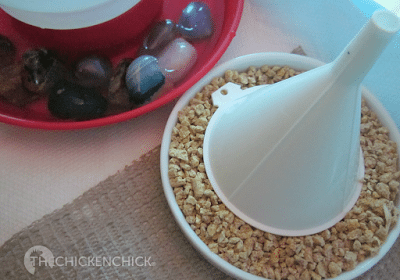
PHYSICAL THERAPY
Cursory concrete therapy sessions help build leg muscles and balance. Support the trunk and let the chick push up to go their residue. As it finds its balance, gradually reduce the amount of aid provided until it tin can stand up independently. 1 infinitesimal sessions, 6-8 times throughout the first day are very important.
This is avideo of Valentina at the end of the beginning twenty-four hour period of treatment.
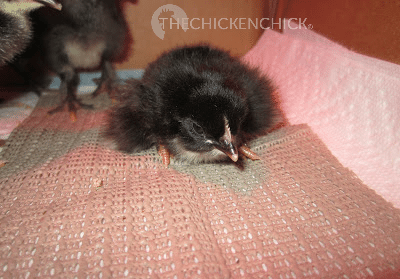
Shelf liner aids in gripping to stand.
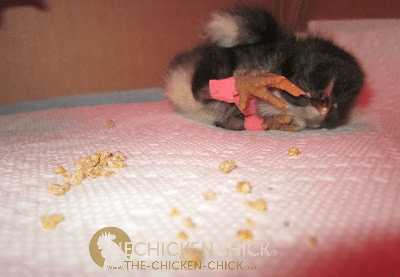
Standing is catchy at first, but practise makes perfect.
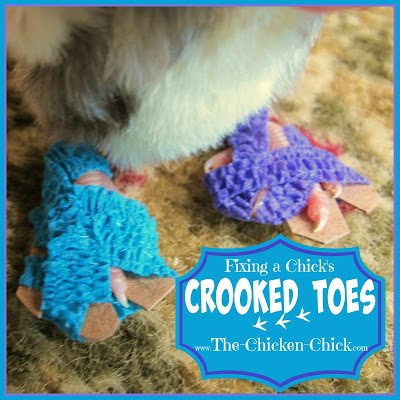
Crooked TOES
Most causes of spraddle leg mentioned higher up tin can also crusade kleptomaniacal toes. According to Gail Damerow in The Chicken Encyclopedia, kleptomaniacal toes can also exist acquired when newly hatched chicks have too much room in the incubator; in trying to get upward and about before their frail basic are fix for the activeness, they tin can bend them. Crooked toes in chicks practise non issue in debilitation and are easily corrected if addressed immediately.
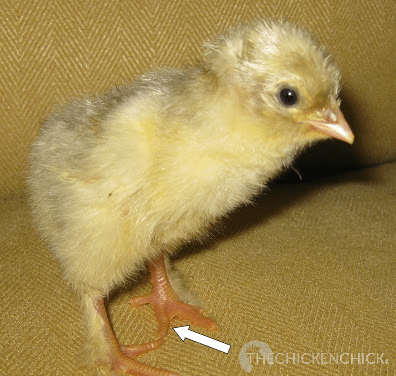
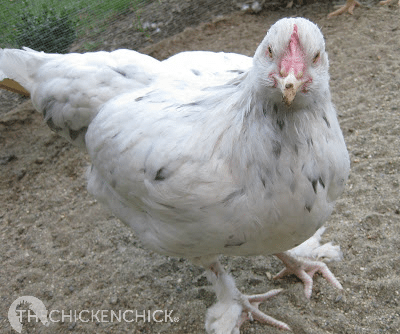
To straighten crooked toes: Create a chick sandal past using thin paper-thin (just heavier than oak tag paper) and trace around the human foot (either mitten-mode or glove-style every bit shown below). Cut wooden skewers, coffee stirrers or pipe cleaners (being careful to protect confronting sharp ends), to the length of the toe. With tiny strips of VetRap, attach the skewers/pipe cleaners to the toes securely plenty that the splint will non move but loosely enough that apportionment is not beingness restricted. Add the cardboard sandal to the lesser of the pes and VetRap it to the lesser.
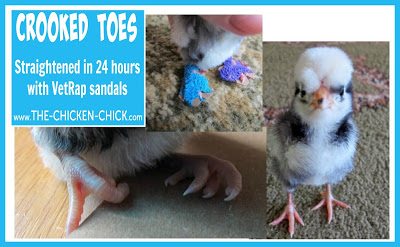
The VetRap provides traction to prevent slipping and is easier to work with than other options similar tape. Generally, the younger the chick, the faster the response to handling. The toes commonly remain directly afterwards a day or two with the sandals, simply may take a fiddling longer for the bones to harden in the correct position.

Here's a crooked toes "cast" I made. HOW TO: Cut two squares of Vetrap just larger than the chick'due south footprint. Identify i square on a flat surface and take the chick stand on the square with toes in corrected positions. Place the 2nd Vetrap foursquare on the top of the toes aligned with the starting time square. Press the Vetrap pieces together around each toe so they stick together. CAREFULLY trim effectually the toes with scissors and gently pinch the Vetrap up effectually the pinnacle of the toes into tiny casts.
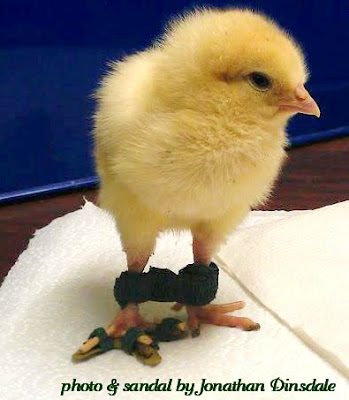


You May Also Like
Source: https://the-chicken-chick.com/spraddle-leg-in-baby-chicks-what-is-it/
0 Response to "4 Week Old Baby Chick With Crooked Toe"
Post a Comment